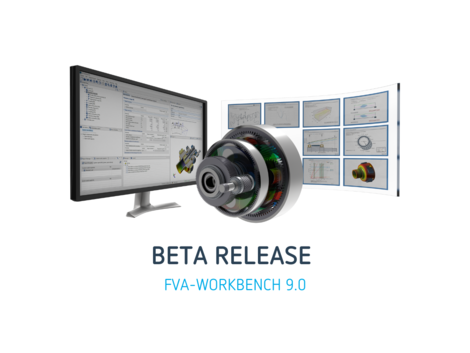Version 9.0 introduces a number of enhancements and innovative features aimed at streamlining your workflow for increased efficiency.
You don’t need an additional license to use this new version of the software. FVA-Workbench 9.0 BETA is available in the FVA Download Center. Alternatively, you can update to the new version from within the FVA-Workbench by clicking "Help" in the software menu and selecting "Download Updates."
If you don't have an FVA-Workbench license, feel free to reach out to us at lizenz(at)fva-service.de for a free trial license. Experience the enhancements firsthand and discover how FVA-Workbench 9.0 can optimize your work processes!
New features in the update include:
Flexible Load Spectrum Calculations: Individual Power Paths for Each Load Stage
In addition to the current load spectrum calculation method, which scales the power path across different load levels, FVA-Workbench 9.0 can now define different operating states. This makes it possible to define different power paths for each load stage, particularly for auxiliary units.
Efficient Integration of Gearbox Housings: Error Prevention and Accelerated Workflows
With the FVA-Workbench 9.0, gearbox housings can now be imported and meshed as individual parts. This can help to avoid errors when assembling CAD components, and coarser meshing saves time on less critical components. This method minimizes errors and speeds up the process. FVA-Workbench 9.0 also allows direct modification of predefined construction coordinate systems, which ensures seamless integration of CAD models in the software. Specifying transformations in the coordinate systems eliminates manual positioning of models and greatly simplifies workflows.
Precise Press Fit Calculations: Elastic-Plastic Material Models
In addition to numerous usability improvements, the stress hypotheses for conical and cylindrical press fits have also been expanded in FVA-Workbench 9.0. Calculations can now be made according to von Mises' shape modification hypothesis as well as the DIN 7190 shear stress hypothesis. This allows for consideration of strain hardening curves for a more precise understanding of the material behavior during partial plasticization.
Detailed FE-based Wear Analysis of Plastic Gear Tooth Profiles with STIRAK
Plastic gear tooth profiles are prone to wear. This wear can be calculated with the FE method according to STIRAK. The simulation indicates the amount of wear for each point on the flank's surface.
For comprehensive release information, check out the Release Notes.

